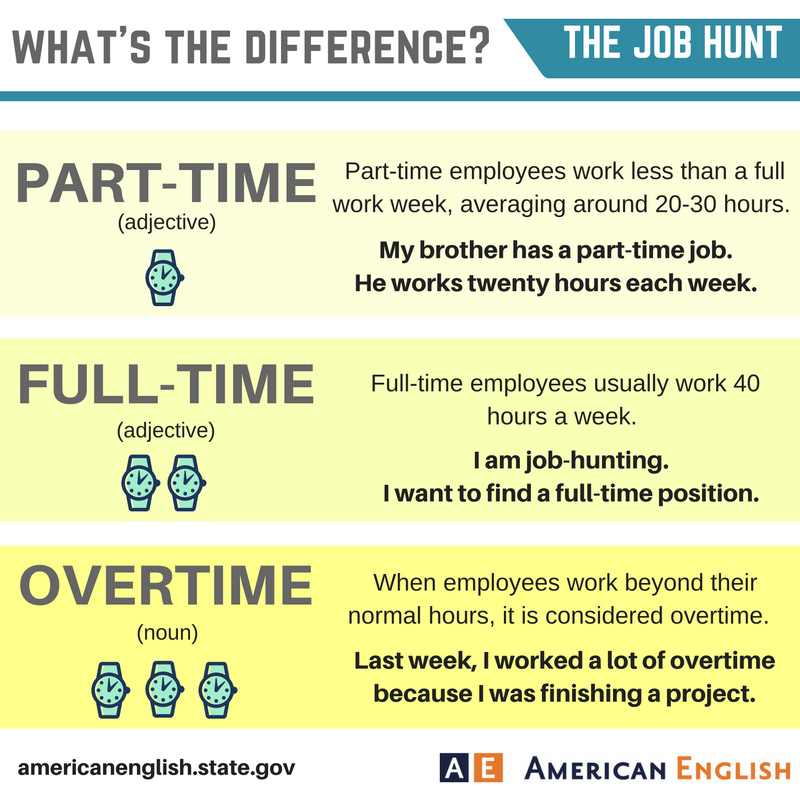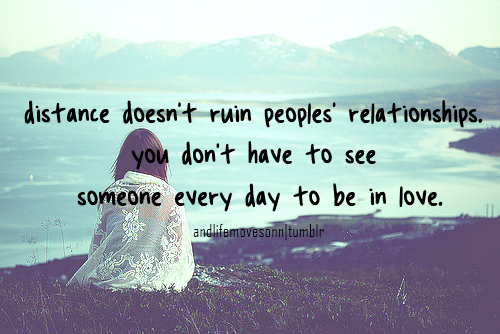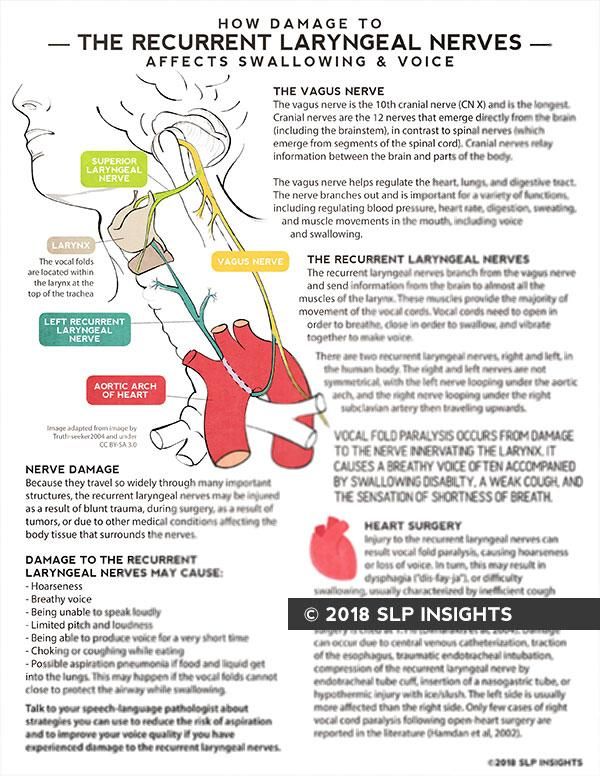Men who objectify women
Male Sexual Shame and Objectification of Women
As the revelations about male sexual harassment and assault continue, many men are surprised at its pervasiveness, but women are not. Even if never overtly harassed or assaulted, they’ve experienced the destructive effects of sexual objectification, including abuse and violence, eating disorders, body shame, depression, risky sexual behavior, and sexual dysfunction. However, both men and women are largely unaware of the damaging impact on men that a culture of male dominance can cause. It causes shame to both men and women.
Sexuality brings abundant opportunities to exaggerate both our vulnerability and shame, to feel pleasure and close, but also to feel unworthy, unacceptable, and unlovable.
Shame and Manhood
Boys must separate from their mothers to establish their masculinity. To accomplish this task, they look to their father, peers, and cultural standards and role models to define what it is to be a man.
Hypermasculinity
Hypermasculinity exaggerates stereotypical male behavior, such as an emphasis on physical strength, aggression, and sexuality. Masculine ideals of toughness, success, and anti-femininity are promoted. It rejects all feminine traits such as tenderness, compassion, and empathy. Being socialized this way, many boys and men have had their emotions shamed in order to conform to the masculine ideal of toughness, creating homophobia around tender feelings. It puts pressure on men to measure up to these norms and simultaneously shames other parts of them. In a culture that encourages hypermasculinity, some fathers humiliate their sons by calling them “sissy,” or “Mama’s boy.”
I was invited as a therapist to attend a ropes course that challenged young teens at risk. The challenges were designed to be frightening — even to adults. Over my objections, one of the male leaders brutally shamed any boy who showed fear, and worse, tears. He traumatized the boy, while re-enacting abuse he’d likely received growing up. This is how shame gets passed down.
Gay Men
In adolescence, teens strive to be accepted as equals among their peers at a time when they’re also establishing their ability to be sexually intimate. It’s a difficult period for all youth, but especially for those in the LBGT community. For a gay boy, it’s shattering to discover that he’s different. He may struggle in isolation. I’ve treated patients who suffered silently for decades and listened to sermons condemning them to hell. Gay teenagers wonder, “Can I become a man and sexually prefer men?” They’re confused, afraid, and ashamed. Because signs of femininity are despised by heterosexual boys trying to establish their own identity, gay teens experience bullying and shaming at school, which may account for a higher rate of adolescent suicides among LGBT youth and substance abuse than heterosexuals..
It’s a difficult period for all youth, but especially for those in the LBGT community. For a gay boy, it’s shattering to discover that he’s different. He may struggle in isolation. I’ve treated patients who suffered silently for decades and listened to sermons condemning them to hell. Gay teenagers wonder, “Can I become a man and sexually prefer men?” They’re confused, afraid, and ashamed. Because signs of femininity are despised by heterosexual boys trying to establish their own identity, gay teens experience bullying and shaming at school, which may account for a higher rate of adolescent suicides among LGBT youth and substance abuse than heterosexuals..
Objectification of Women
Countless men are socialized by their fathers, brothers, and male peers to objectify, dominate, and degrade women. Objectification of women strengthens these values and strains male relationships with women. It’s reinforced through “girl watching,” promiscuity or competition among men to “score,” having a beautiful woman as a trophy, and addiction to pornography, especially if it involves male power over for females (Elder, 2010).
The popularity of violent porn is growing, and studies show that it contributes to pedophilia, misogyny, and violence against women. Hard porn is often the basis for male sex education. It normalizes male conquest, control, and dominance and promotes the fantasy that all women enjoy what men demand, including aggression, or that they can be easily coerced to (Jensen, 2007). Teenage boys then believe that they can and should behave this way, but are disillusioned and disempowered when they discover reality differs. Power over the opposite gender is used to bolster male low self-esteem and deeply denied shame. (This includes shame for any reason, not just sexual shame.) But it comes at a price.
Impact on Boys and Men
Shaming of emotions, the body, or normal needs and wants that is chronic or severe is deeply wounding and can result in trauma, addiction, aggression, and codependency (Lancer, 2014). Usually, this occurs in an environment of dysfunctional parenting, where shame, and often abuse, has already undermined boys’ developing sense of identity. Teaching boys to be hypermasculine and to disrespect women as equals encourages domination, emotional abuse, and violence. The emotional toll on men is never discussed, because it’s considered “weak” and shrouded in shame.
Teaching boys to be hypermasculine and to disrespect women as equals encourages domination, emotional abuse, and violence. The emotional toll on men is never discussed, because it’s considered “weak” and shrouded in shame.
When shamed, children internalize parental messages as toxic shame and conclude that they’re unlovable. Without treatment, it can last a lifetime, negatively affecting a boy’s self-esteem, sexual identity, and relationships with women. Some suffer silently, not knowing how to meet their parents’ expectations; others try harder to conform to masculine ideals. Many boys must play act to be someone they’re not.
Passage into manhood often exposes them to humiliation during a period when openness and honesty aren’t allowed. They have to hide their feelings and natural instincts. They feel alienated from other boys and from their real self. They may reject the tough, abusive role model their father represents. Some teens withdraw and have difficulty establishing their masculine identity. When boys and men have to defend their toughness and image, it further heightens their vulnerability to shame as well as their defensiveness. Some boys and men become bullies to compensate for insecurity. Like the counselor at the ropes course, they shame others or their own children the way they were shamed at home.
When boys and men have to defend their toughness and image, it further heightens their vulnerability to shame as well as their defensiveness. Some boys and men become bullies to compensate for insecurity. Like the counselor at the ropes course, they shame others or their own children the way they were shamed at home.
Depersonalizing sex and objectifying women both absolves men of responsibility for their actions and protects them from the shame of rejection (Carnes, 1992). Yet, half of men feel shame about their behavior toward women, leading them to question their worth and lovability as human beings (Elder, 2010).
Shame and Intimacy
Men want connection as much as women. But all of these expectations on them generate insecurity and vulnerability to shame that make connection and authenticity difficult. Real intimacy can be too frightening and carries shame-anxiety. Instead of receiving nurturing and closeness, many men separate love and sex — and substitute sex for love to avoid the anxiety of intimacy. Sex is also used to allay anxiety, fill emptiness, lift depressed feelings, and build identity and self-worth. But loveless sex sets the stage for impotence and depression later (May, 2011).
Sex is also used to allay anxiety, fill emptiness, lift depressed feelings, and build identity and self-worth. But loveless sex sets the stage for impotence and depression later (May, 2011).
Although both partners may be gratified sexually, they’re often not fulfilled, nor does their self-esteem benefit. It can potentially leave them with guilt, shame, low self-esteem, and feeling even emptier than before. Sex can become addictive, since there is short term pleasure, but the emptiness is never filled. New partners must be found to ensure excitement and avoid intimacy. Affairs and sexual flirtation with someone outside of a committed relationship are often initiated to boost self-esteem but risk damaging the partner and the relationship, creating more shame.
Over time in long relationships, sex may be divorced from all feeling and become machinelike, especially when any emotional connection has waned. It’s dehumanizing to both partners and their needs for real connection are never met. But emptiness is neither fillable from sex, nor from exerting power over others, and the gap between men’s real self and the persona they believe they must project gets ever wider.
But emptiness is neither fillable from sex, nor from exerting power over others, and the gap between men’s real self and the persona they believe they must project gets ever wider.
However, shame and psychological emptiness can heal with psychotherapy and self-love and compassion. (SeeConquering Shame and Codependency: 8 Steps to Freeing the True You).
References:
Brooks, G.R. (1995), The Centerfold Syndrome: How Men Can Overcome Objectification and Achieve Intimacy with Women, San Francisco, CA: Jossey-Bass Inc.
Carnes, P. (1992). Out of the Shadows: Understanding Sexual Addiction. Minneapolis, Minn: CompCare Publishers.
Elder, W. B. (2010). The Centerfold Syndrome: Exploring the Constructs of Heterosexual Male Sexual self-Schemas,” . University of Utah.
Jensen, R. (2007). Getting Off: Pornography and the End of Masculinity . Brooklyn, NY : South End Press.
Lancer, D. (2014). Conquering Shame and Codependency: 8 Steps to Freeing the True You. Hazelden Foundation.
Hazelden Foundation.
May, R. (2011). Love and Will. New York: W. W. Norton & Company.
©Darlene Lancer 2017
Male Sexual Shame and Objectification of Women
As the revelations about male sexual harassment and assault continue, many men are surprised at its pervasiveness, but women are not. Even if never overtly harassed or assaulted, they’ve experienced the destructive effects of sexual objectification, including abuse and violence, eating disorders, body shame, depression, risky sexual behavior, and sexual dysfunction. However, both men and women are largely unaware of the damaging impact on men that a culture of male dominance can cause. It causes shame to both men and women.
Sexuality brings abundant opportunities to exaggerate both our vulnerability and shame, to feel pleasure and close, but also to feel unworthy, unacceptable, and unlovable.
Shame and Manhood
Boys must separate from their mothers to establish their masculinity. To accomplish this task, they look to their father, peers, and cultural standards and role models to define what it is to be a man.
Hypermasculinity
Hypermasculinity exaggerates stereotypical male behavior, such as an emphasis on physical strength, aggression, and sexuality. Masculine ideals of toughness, success, and anti-femininity are promoted. It rejects all feminine traits such as tenderness, compassion, and empathy. Being socialized this way, many boys and men have had their emotions shamed in order to conform to the masculine ideal of toughness, creating homophobia around tender feelings. It puts pressure on men to measure up to these norms and simultaneously shames other parts of them. In a culture that encourages hypermasculinity, some fathers humiliate their sons by calling them “sissy,” or “Mama’s boy.”
I was invited as a therapist to attend a ropes course that challenged young teens at risk. The challenges were designed to be frightening — even to adults. Over my objections, one of the male leaders brutally shamed any boy who showed fear, and worse, tears. He traumatized the boy, while re-enacting abuse he’d likely received growing up. This is how shame gets passed down.
This is how shame gets passed down.
Gay Men
In adolescence, teens strive to be accepted as equals among their peers at a time when they’re also establishing their ability to be sexually intimate. It’s a difficult period for all youth, but especially for those in the LBGT community. For a gay boy, it’s shattering to discover that he’s different. He may struggle in isolation. I’ve treated patients who suffered silently for decades and listened to sermons condemning them to hell. Gay teenagers wonder, “Can I become a man and sexually prefer men?” They’re confused, afraid, and ashamed. Because signs of femininity are despised by heterosexual boys trying to establish their own identity, gay teens experience bullying and shaming at school, which may account for a higher rate of adolescent suicides among LGBT youth and substance abuse than heterosexuals..
Objectification of Women
Countless men are socialized by their fathers, brothers, and male peers to objectify, dominate, and degrade women. Objectification of women strengthens these values and strains male relationships with women. It’s reinforced through “girl watching,” promiscuity or competition among men to “score,” having a beautiful woman as a trophy, and addiction to pornography, especially if it involves male power over for females (Elder, 2010).
Objectification of women strengthens these values and strains male relationships with women. It’s reinforced through “girl watching,” promiscuity or competition among men to “score,” having a beautiful woman as a trophy, and addiction to pornography, especially if it involves male power over for females (Elder, 2010).
The popularity of violent porn is growing, and studies show that it contributes to pedophilia, misogyny, and violence against women. Hard porn is often the basis for male sex education. It normalizes male conquest, control, and dominance and promotes the fantasy that all women enjoy what men demand, including aggression, or that they can be easily coerced to (Jensen, 2007). Teenage boys then believe that they can and should behave this way, but are disillusioned and disempowered when they discover reality differs. Power over the opposite gender is used to bolster male low self-esteem and deeply denied shame. (This includes shame for any reason, not just sexual shame.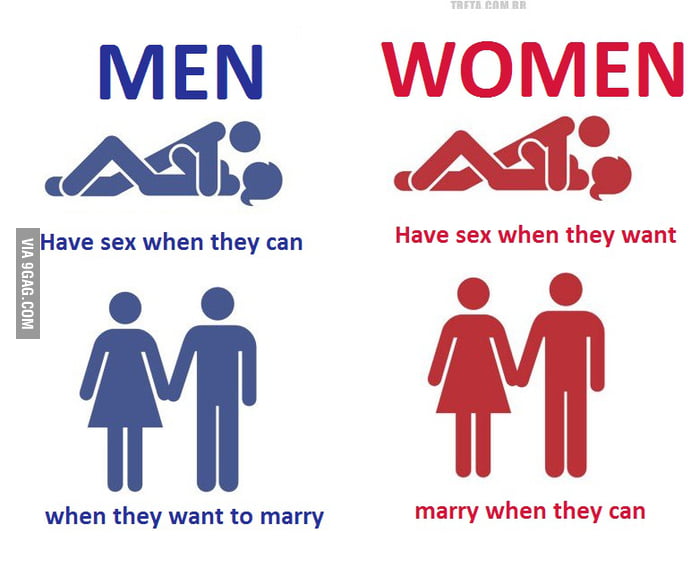 ) But it comes at a price.
) But it comes at a price.
Impact on Boys and Men
Shaming of emotions, the body, or normal needs and wants that is chronic or severe is deeply wounding and can result in trauma, addiction, aggression, and codependency (Lancer, 2014). Usually, this occurs in an environment of dysfunctional parenting, where shame, and often abuse, has already undermined boys’ developing sense of identity. Teaching boys to be hypermasculine and to disrespect women as equals encourages domination, emotional abuse, and violence. The emotional toll on men is never discussed, because it’s considered “weak” and shrouded in shame.
When shamed, children internalize parental messages as toxic shame and conclude that they’re unlovable. Without treatment, it can last a lifetime, negatively affecting a boy’s self-esteem, sexual identity, and relationships with women. Some suffer silently, not knowing how to meet their parents’ expectations; others try harder to conform to masculine ideals.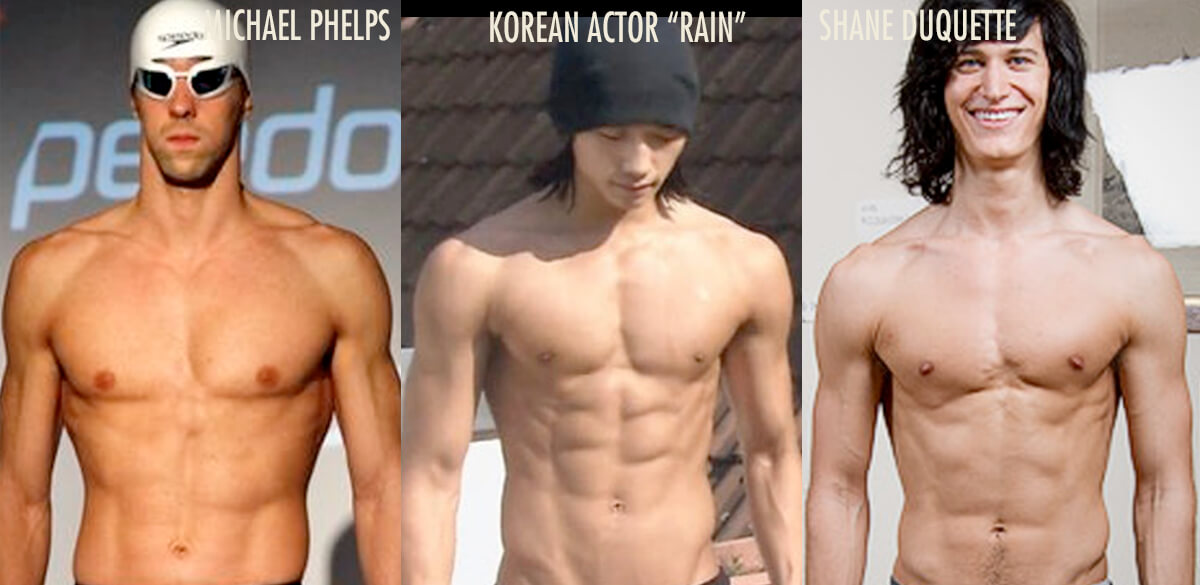 Many boys must play act to be someone they’re not.
Many boys must play act to be someone they’re not.
Passage into manhood often exposes them to humiliation during a period when openness and honesty aren’t allowed. They have to hide their feelings and natural instincts. They feel alienated from other boys and from their real self. They may reject the tough, abusive role model their father represents. Some teens withdraw and have difficulty establishing their masculine identity. When boys and men have to defend their toughness and image, it further heightens their vulnerability to shame as well as their defensiveness. Some boys and men become bullies to compensate for insecurity. Like the counselor at the ropes course, they shame others or their own children the way they were shamed at home.
Depersonalizing sex and objectifying women both absolves men of responsibility for their actions and protects them from the shame of rejection (Carnes, 1992). Yet, half of men feel shame about their behavior toward women, leading them to question their worth and lovability as human beings (Elder, 2010).
Shame and Intimacy
Men want connection as much as women. But all of these expectations on them generate insecurity and vulnerability to shame that make connection and authenticity difficult. Real intimacy can be too frightening and carries shame-anxiety. Instead of receiving nurturing and closeness, many men separate love and sex — and substitute sex for love to avoid the anxiety of intimacy. Sex is also used to allay anxiety, fill emptiness, lift depressed feelings, and build identity and self-worth. But loveless sex sets the stage for impotence and depression later (May, 2011).
Although both partners may be gratified sexually, they’re often not fulfilled, nor does their self-esteem benefit. It can potentially leave them with guilt, shame, low self-esteem, and feeling even emptier than before. Sex can become addictive, since there is short term pleasure, but the emptiness is never filled. New partners must be found to ensure excitement and avoid intimacy. Affairs and sexual flirtation with someone outside of a committed relationship are often initiated to boost self-esteem but risk damaging the partner and the relationship, creating more shame.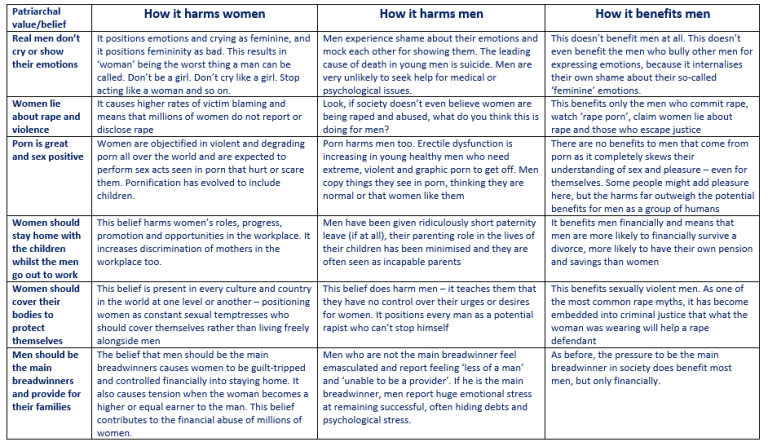
Over time in long relationships, sex may be divorced from all feeling and become machinelike, especially when any emotional connection has waned. It’s dehumanizing to both partners and their needs for real connection are never met. But emptiness is neither fillable from sex, nor from exerting power over others, and the gap between men’s real self and the persona they believe they must project gets ever wider.
However, shame and psychological emptiness can heal with psychotherapy and self-love and compassion. (SeeConquering Shame and Codependency: 8 Steps to Freeing the True You).
References:
Brooks, G.R. (1995), The Centerfold Syndrome: How Men Can Overcome Objectification and Achieve Intimacy with Women, San Francisco, CA: Jossey-Bass Inc.
Carnes, P. (1992). Out of the Shadows: Understanding Sexual Addiction. Minneapolis, Minn: CompCare Publishers.
Elder, W. B. (2010). The Centerfold Syndrome: Exploring the Constructs of Heterosexual Male Sexual self-Schemas,” . University of Utah.
University of Utah.
Jensen, R. (2007). Getting Off: Pornography and the End of Masculinity . Brooklyn, NY : South End Press.
Lancer, D. (2014). Conquering Shame and Codependency: 8 Steps to Freeing the True You. Hazelden Foundation.
May, R. (2011). Love and Will. New York: W. W. Norton & Company.
©Darlene Lancer 2017
What are the origins of the sexual objectification of women?
Alpina Non-Fiction has published David Bass's book Why Men Do It. The Roots of Sexual Deception, Harassment and Violence” (the original title was more modest: When Men Behave Badly, that is, “When Men Behave Badly”). With the permission of the editors, we publish a chapter of this work devoted to the initial causes and negative consequences of the sexual objectification of women.
Since February 24, 2022, all of us have found ourselves in the face of advancing barbarism, violence and lies. In this situation, it is extremely important to preserve at least the remnants of culture and support the values of humanism, including for the sake of the future of Russia.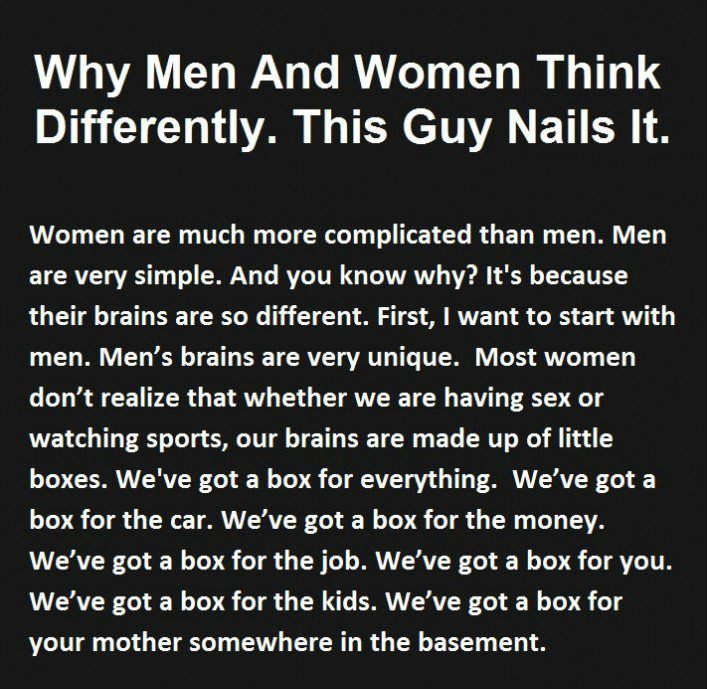 Therefore, the editors of Gorky will continue to talk about books, reminding our readers that there is room for thought and fiction in the world. nine0008
Therefore, the editors of Gorky will continue to talk about books, reminding our readers that there is room for thought and fiction in the world. nine0008
David Bass. Why do men do it. Roots of sexual deceit, harassment and violence. M.: Alpina non-fiction, 2022. Translation from English by Olga Korchevskaya. Contents
Men sexualize women by looking first at physical attractiveness and then at other qualities, and sometimes look at women as a source of sexual pleasure. This is such an obvious fact that pointing to it is like saying water is wet. Professors Tomi-Ann Roberts and Barbara Fredrickson were among the first scientists to record evidence of the negative effects of the sexual objectification of women. They argue that the media, advertising, socialization practices, music videos, and beauty pageants cause people to treat women as sexual objects, losing sight of more significant intrinsic qualities such as self-identity, character, needs, desires, feelings, and moral principles.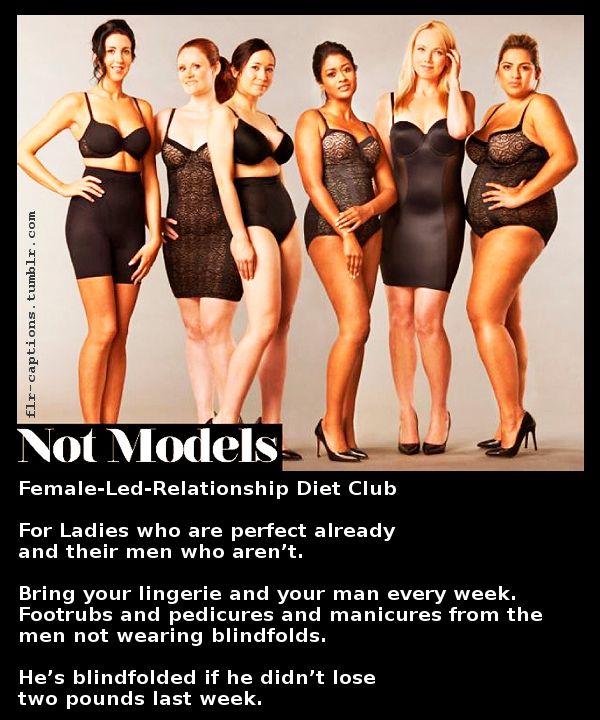 Roberts and Fredrickson say that sexual objectification leads to a whole range of problems for women, including the internalization of the external - when a woman begins to treat herself as an object for sex. nine0003
Roberts and Fredrickson say that sexual objectification leads to a whole range of problems for women, including the internalization of the external - when a woman begins to treat herself as an object for sex. nine0003
Scientists say that self-objectification causes women to spend money on cosmetics, resort to potentially harmful cosmetic surgery and be ashamed of their bodies. The constant focus on improving their own appearance wastes time and energy that women could spend on other activities. Internal and external sexual objectification gives rise to many problems. Some of them are related to mental health: anxiety, depression, eating disorders. All this points to deep gender differences. Women are twice as likely as men to suffer from depression and about nine times more likely to suffer from eating disorders. They face sexual harassment at work. Troubles constantly arise in public places: women are made indecent remarks, horns from cars, cast lustful looks at them, comments on breasts or buttocks. nine0003
nine0003
Men who see women as an exclusively sexual object are more prone to sexual aggression. If a rape victim was wearing a revealing outfit, she is more likely to be unfairly blamed and held partially responsible for the man's violent actions. Even in the absence of violence, sexual objectification by men can lead them to view women as desirable partners for casual sexual encounters, at the expense of strong and fulfilling long-term relationships. nine0003
While Roberts and Fredrickson are no doubt accurate in describing sexual objectification and its consequences, the evolutionary approach provides a deeper explanation of why it occurs. From an evolutionary standpoint, all living males are descended from a long and unbroken line of male ancestors who paid attention to and prioritized the obvious physical and behavioral signs of female fertility. Men who did not do this did not become our ancestors. A woman's appearance shows many of the likely signs of fertility - clear skin, rosy cheeks, clear eyes, full lips, shiny long hair, good muscle tone, feminine facial features, feminine voice, body-to-face symmetry, low waist-to-hip ratio. Throughout the long evolutionary history of mankind, men who sexualized the signs of fertility, found them attractive and obeyed their attraction, outperformed men who behaved differently in terms of reproductive success. Modern men have inherited the adaptive mechanism that made their ancestors successful, and the evaluation of women on the basis of sexual attractiveness has remained the most important criterion, despite its harmful and destructive consequences. nine0003
Throughout the long evolutionary history of mankind, men who sexualized the signs of fertility, found them attractive and obeyed their attraction, outperformed men who behaved differently in terms of reproductive success. Modern men have inherited the adaptive mechanism that made their ancestors successful, and the evaluation of women on the basis of sexual attractiveness has remained the most important criterion, despite its harmful and destructive consequences. nine0003
The importance that men attach to a woman's appearance has in turn determined one of the basic rules of women's competition for partners. Throughout history, physically attractive women have been able to attract more desirable men—those who have status and resources and are able and willing to invest heavily in a woman and her children. Male thinking that objectifies women, which at one level of analysis appears as a tool for the oppression of women, on the other hand, has created conflict between women in the form of fierce competition for the qualities that men want to see in a potential partner.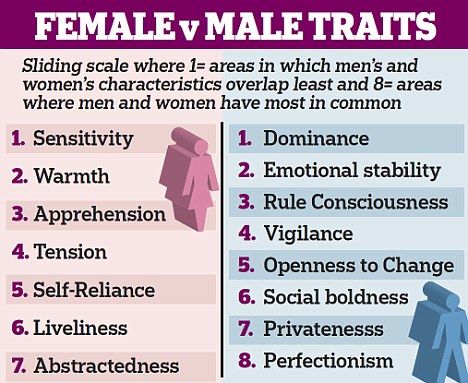 nine0003
nine0003
In modern conditions, this has led to a tragic form of female intrasexual competition. Women are indeed heavily influenced by the images cultivated by the media. These images trigger coping mechanisms that force women to compete for a partner and instill in them highly distorted ideas about what those who compete with them look like. In fact, women's competitors are not supermodels like Cindy Crawford or actresses like Charlize Theron. And not scantily clad bloggers from modern social networks. However, images of popular personalities have a powerful influence on women. The use of dermal fillers to plump up the lips and Botox injections to the forehead to smooth wrinkles is a form of female intrasexual competition. Breast implants and tummy tucks are forms of female competition. Advertisers exploit female competition to sell a product. They play on social comparison, forcing women to rate each other on their looks in order to sell billions of dollars worth of cosmetics a year. As more women use cosmetics and resort to cosmetic enhancements, the real competition between women in terms of attractiveness intensifies. In a word, the sexual psychology of men is the key reason for the emergence of the female psychology of intrasexual competition. Male and female psychology developed simultaneously and are inextricably linked. nine0003
As more women use cosmetics and resort to cosmetic enhancements, the real competition between women in terms of attractiveness intensifies. In a word, the sexual psychology of men is the key reason for the emergence of the female psychology of intrasexual competition. Male and female psychology developed simultaneously and are inextricably linked. nine0003
The intensity of competition between women is growing due to another modern innovation - easy access to pornography on the Internet. A study of pornography consumption in Denmark, a country of gender equality, conducted on 688 young people, shows profound differences between the sexes. Danish men begin consuming pornography at an earlier age than women, spend significantly more time on it, prefer a wider range of pornography, and tend to view hardcore pornography. Denmark, of course, cannot be called a unique or atypical country. Similar gender differences are seen in all contemporary cultures. With just one click, countless videos of attractive, naked, ready-to-sex women become available.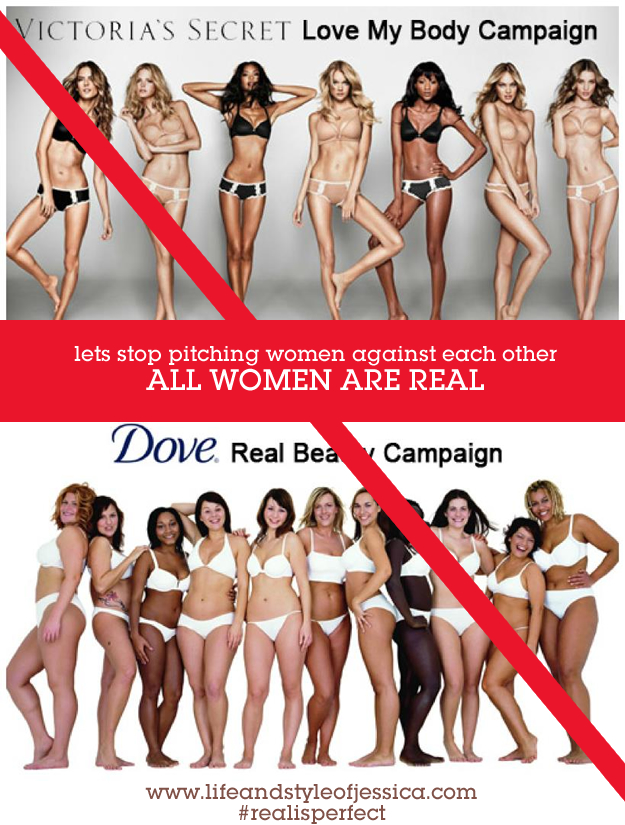 Much of pornography is the sexual objectification of women in its extreme forms. Women in it are depicted mainly as objects of sexual desire. nine0003
Much of pornography is the sexual objectification of women in its extreme forms. Women in it are depicted mainly as objects of sexual desire. nine0003
Easy access to an abundance of computer pornography has exacerbated a number of negative outcomes for men and women. For men, it creates a distorted and untrue idea of female sexual psychology. Most women do not fantasize about a quick, within a few seconds, transition from the first meeting to sex and do not want to have such sex in real life. The demonstration of hundreds of sexually attractive and accommodating women creates completely unrealistic expectations in the male mind. The situation creates conflict by forcing real women to live up to men's expectations or engage in unwanted sexual acts in order to match what men see on the internet. For lazy men, pornography can replace partnerships. Instead of attracting women in real life and creating deep, satisfying relationships, men substitute pornography for marital goals. nine0003
In short, the spread of pornography consumption in the modern world has exacerbated gender conflicts and exacerbated the negative effects of female intrasexual competition. The technology behind access to pornography is modern. The sexual psychology they employ is ancient in an evolutionary sense.
The technology behind access to pornography is modern. The sexual psychology they employ is ancient in an evolutionary sense.
Along with male sexual possessiveness, the sexual objectification of women is responsible for the emergence and maintenance of patriarchal beliefs, values, attitudes, and behaviors that value a woman's sexuality over personal qualities. Such thinking, in turn, gives rise to other negative consequences: women are hired and promoted based on external data, in many professions women are discriminated against by age, they face sexual harassment at work, they are forced to endure smirks and obscene remarks on the street. and unwanted touches in public transport. nine0003
It remains an open question whether it is possible to completely turn off the type of thinking that has been formed over the course of history, if it is so expensive. However, as with most psychological mechanisms, we can block its manifestations in real behavior. Although there are currently federal laws prohibiting discrimination in the workplace on the basis of extreme obesity (such individuals are considered disabled and therefore a protected category of citizens), there are no federal laws prohibiting discrimination based on appearance. At the same time, some regions have already begun to fight for their implementation. The city of Santa Cruz in California prohibits discrimination based on physical appearance. In the District of Columbia, appearance, along with gender, age, ethnicity, and sexual orientation, is included among "protected categories." nine0003
At the same time, some regions have already begun to fight for their implementation. The city of Santa Cruz in California prohibits discrimination based on physical appearance. In the District of Columbia, appearance, along with gender, age, ethnicity, and sexual orientation, is included among "protected categories." nine0003
It would be naive to think that if we simply know about the unfortunate features of male sexual psychology, then this will miraculously eliminate all its harmful manifestations. However, greater awareness will have beneficial consequences with the emergence of good role models and changes in the norms of social behavior, regardless of the implementation of legal acts. The Swedish students who tried to stop Stanford's Brock Turner from committing violence against an unconscious woman later became heroes, and they may be looked up to by witnesses of sex crimes in the future. People are deeply concerned about their status and reputation, respectful attitude from others. The desire to disassociate from those who discriminate on the basis of appearance or insult women with obscene comments or touches, on the one hand, and admiration for those who suppress such actions, on the other, will make some men refrain from unseemly acts. This will help limit the sexual objectification of women. In short, we can use our historical preoccupation with social position and reputation to close the psychological gap between men and women and reduce the divisions between the sexes. nine0003
The desire to disassociate from those who discriminate on the basis of appearance or insult women with obscene comments or touches, on the one hand, and admiration for those who suppress such actions, on the other, will make some men refrain from unseemly acts. This will help limit the sexual objectification of women. In short, we can use our historical preoccupation with social position and reputation to close the psychological gap between men and women and reduce the divisions between the sexes. nine0003
Objectification of men: do strippers feel they are being used?
- Emily Maitlis
- BBC Newsnight
Sign up for our Context Newsletter to help you understand what's going on.
You need JavaScript enabled or a different browser to view this content
Video caption,Is there objectification in male striptease?
The Chippendales label their performances as "half show, half party" - a men's variety revue that, as they say, opens up a little more.
Here, however, they were obviously modest.
I sat through the first half hour of their show in Las Vegas and during that time I saw naked male buttocks, simulated sex, and a strange game that is difficult to describe - suffice it to say that it used a banana as a prop. nine0003
But first and foremost it's still a dance show: athletic, graceful male figures help the spectators feel that they have power.
Throughout the evening - consisting of approximately 15 dance routines and costume changes reflecting stereotypical female sexual fantasies (construction workers, firefighters, and men on motorcycles) - the women in the audience can engage as deeply in the show as they wish.
- Young British people find Friends to be homophobic and sexist
- From Pussy Riot to Femen: the loudest protests of women from the CIS
- "Fifth Floor": gender equality and its pitfalls
- "They asked me to bring coffee": gender stereotypes in business
stage, others simply shout from a distance, all women encouraged not to be shy but to reach out and feel the performers as they make their notorious run through the crowd.
"On an average night, how many hands touch you?" I ask lead dancer Ryan Kelsey. nine0003
Not at all embarrassed, he replies: "Somewhere, probably around 40 or 50. Our hall can accommodate no more than 350 people, so even when we have a relatively full house, we try to move around the hall as much as possible, so that everyone was able to experience the most complete Chippendales show experience."
Image caption,Artists can change over a dozen times during the show
Skip the Podcast and continue reading.
Podcast
What was that? nine0003
We quickly, simply and clearly explain what happened, why it's important and what's next.
episodes
The End of the Story Podcast
"And you like it - being touched?" I ask.
"I love it," says the dancer.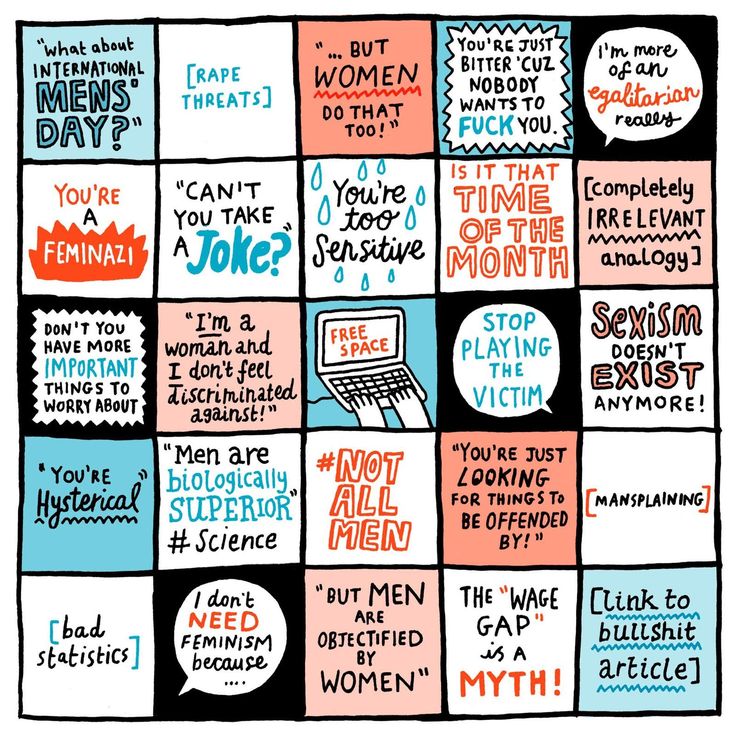 "It's not so much about the touch itself, it's just a way of getting pleasure. You leave, and they are giggling with their girlfriends. It's more about creating an atmosphere of joy than about the touch itself."
"It's not so much about the touch itself, it's just a way of getting pleasure. You leave, and they are giggling with their girlfriends. It's more about creating an atmosphere of joy than about the touch itself."
Let me pause here for a moment and explain how I got here in the first place. nine0003
A couple of weeks ago I interviewed Piers Morgan for Radio Times magazine. He grumbled about the double standards of the "#And me too" movement, the banning of grid girls from Formula 1, and so on, calling it all "new puritanism."
"You need to see how women act when they come to the Chippendales show," he told me. about male behavior? nine0003
It hit me to the core and sparked curiosity enough to send me a quick email to the Chippendales agent when I was in Las Vegas for the weekend. He allowed me to interview one of his men on the question of whether male strippers feel the same level of objectification towards themselves as their female counterparts.
All my "brain-to-muscle" prejudices vanish as soon as I meet Ryan.
I tell him that I have heard stories of women who, in a rush of enthusiasm, left bite marks on the dancers' legs or scratched their backs with their fingernails until they bled. nine0003 Image caption,
The Chippendales show is attended by viewers of all ages
"Extremely rare, but it does happen," he admits. where the border is."
"Does it hurt?" I ask.
"A scratch is a scratch," he says. "But I remember where I work. I understand that even if it's not in our rules, it's still within the realm of possibility. If you see someone going do it again, you tell them: you can touch, but don’t do it like that again.” nine0003
So does he think his job is the same as that of female strippers?
"No," he replies. "First and foremost, we have a show. Also, our show doesn't include tips, so no one puts any dollars anywhere. "
"
This is important because it doesn't make any of the dancers feel like they're being bought, chosen by someone they like, asking for attention, favors, and ultimately sex.
He continues: "You can't influence us. No one will say: God, this woman has money, she throws twenties, she throws hundreds of dollars! If you start paying more attention to her, it means that another spectator who "maybe put off a few weeks to save up for this trip, will be left out. We wanted to avoid any such situations, so we treat everyone in the hall equally." nine0003 Photo caption,
Show guests are allowed on stage and dancers occasionally walk around the auditorium
This serves as a reminder of how central to all these debates is the topic of financial power.
The #MeToo ("Me Too") movement has helped raise awareness of how women are humiliated or objectified.
Is it appropriate to ask the same question about men in similar roles?
But he only welcomes this movement: he believes that now he understands his girlfriends much better. nine0003
nine0003
"I think there's some difference," he says. "We're in this out of good will."
"We don't have you having a normal day, going out for coffee with someone, or even thinking you're on a nice date - and suddenly find yourself cornered, with your back against the wall - figuratively or literally I mean, thinking about how to get out of this," he says. "I chose to come to work here, and I think that the very participation on such conditions changes the whole picture." nine0003
I push, "Do you feel like you're being objectified?"
Image caption,Emily Maitlis with her interlocutor
"No, I'm participating myself," he replies.
I wonder what he thinks about the latest developments in the industry: the ban on grid girls in Formula 1 or the girls who walked the podium in darts competitions? What about ringside girls at boxing matches in Las Vegas? nine0003
- Why famous French women are against sex violence fighters in the USA
"It's a difficult question," he agrees.
